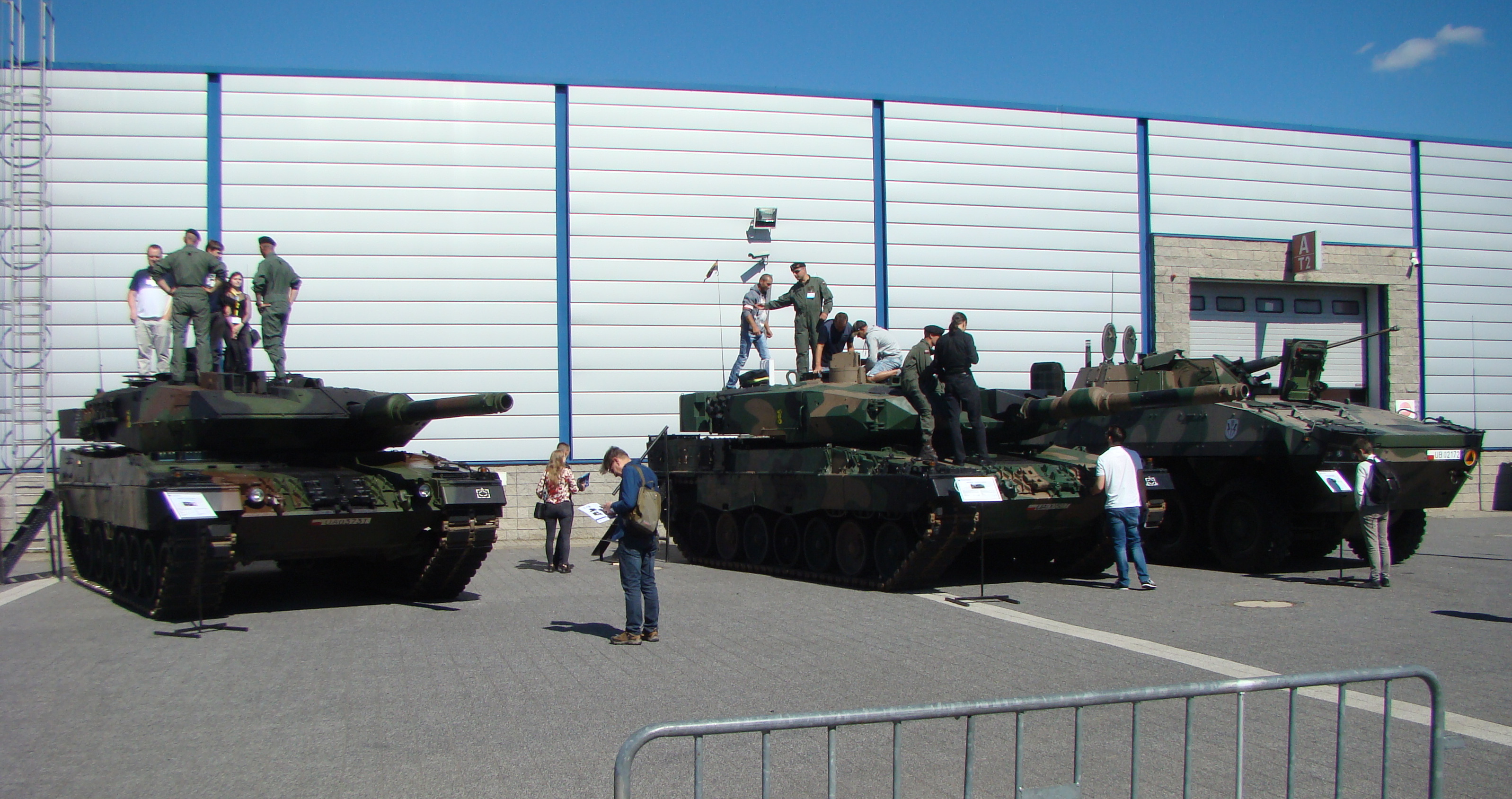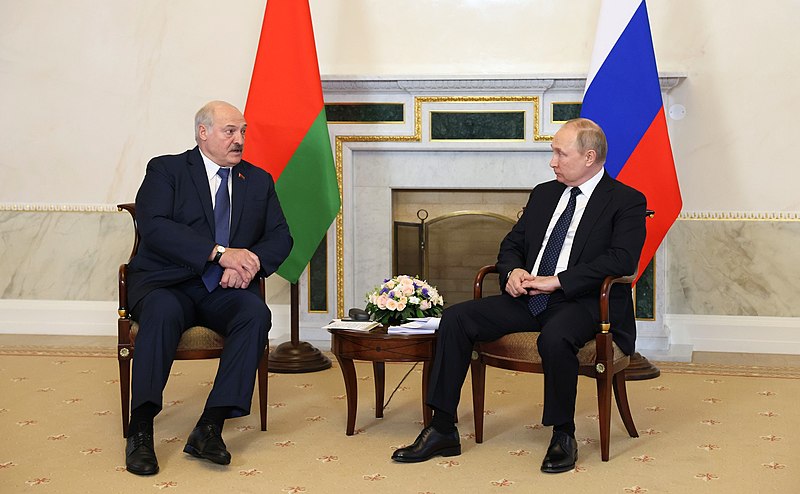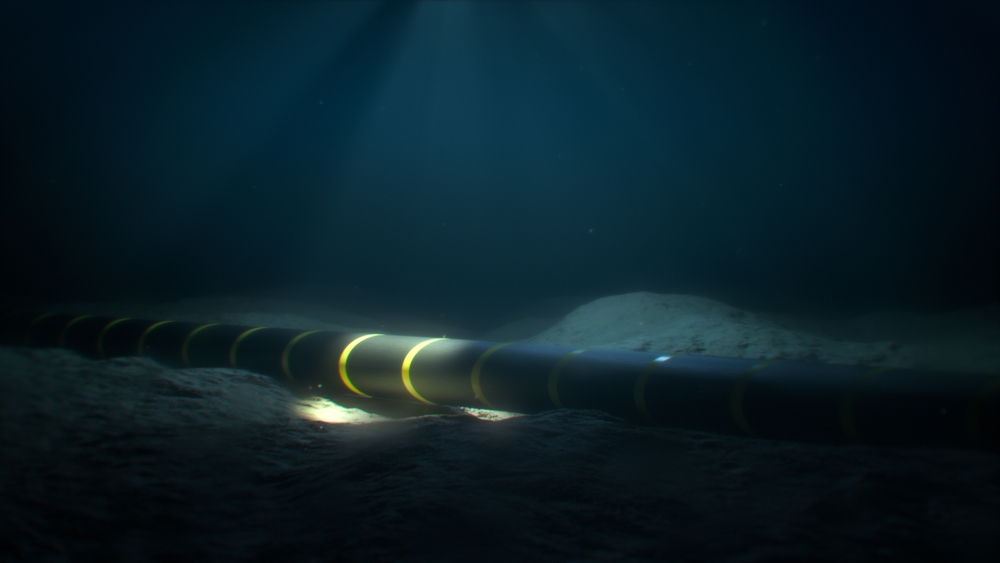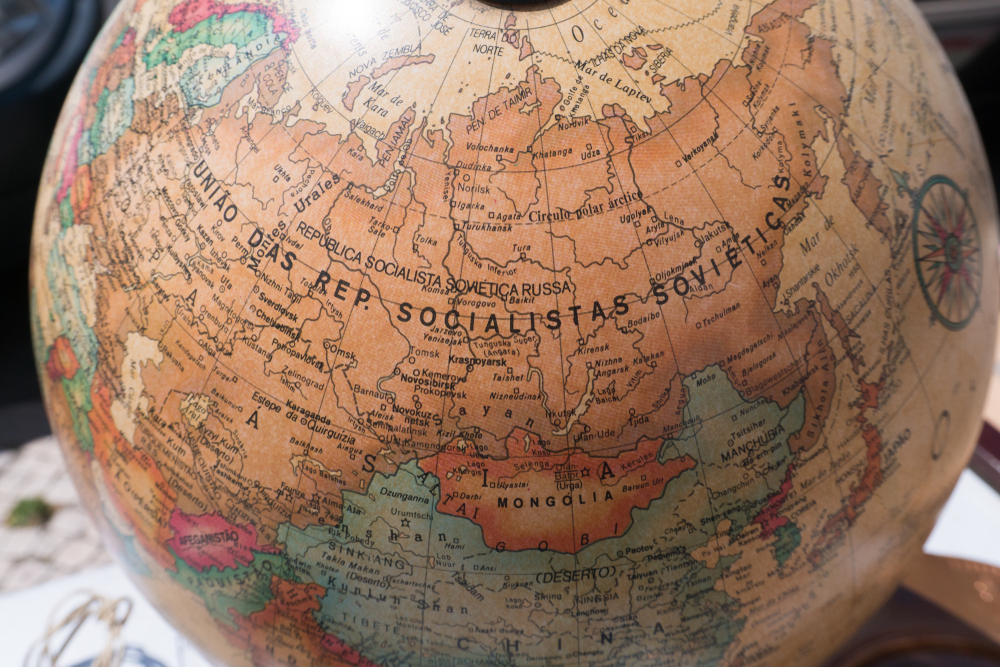
EUROPEAN SECURITY, EURASIAN CROSSROADS?
by Zachary Paikin , Christos Katsioulis
Keeping rules-based cooperation afloat on a war-torn continent SUMMARYThe NATO summit in Vilnius taking place from 11 to 12 July 2023 marks another step towards deepening the relationship between Ukraine and the collective West. When paired with the EU’s reinvigorated enlargement process, there is a growing tendency to assume that Washington and Brussels can – or even must – set the terms of the European security order without input from Moscow. However, in a world of ‘mega-regions’ and competing visions of international order, cooperative security remains relevant if the EU wishes to salvage some degree of rules-based order in the space that connects Europe with Eurasia. As first steps in this direction, the EU should work to keep the OSCE operational, launch a limited dialogue with Belarus on arms control, and envision a future for the European Political Community that someday includes Russia. Two highly controversial issues are at the core of our assessment – the amendments to Article 66a concerning future electricity price crises and the resort to inframarginal revenue caps1. The significance of the imagery was unmistakable. In late March earlier this year, Chinese President Xi Jinping visited his counterpart Vladimir Putin in Moscow, at the same time as Japanese Prime Minister Fumio Kishida visited President Volodymyr Zelensky in Kyiv. Although lying at near-opposite ends of the Eurasian supercontinent, the leaders of Asia’s two largest economies visiting the belligerents of a European conflict served to illustrate just how integrated the security dynamics of the two theatres had become. Yet it was the Chinese leader, whose country had been the victim of Japanese imperialism in the twentieth century, who was showing off his strategic partnership with a country that had just a year earlier committed an act of unprovoked aggression against its neighbour, while Japan’s head of government demonstrated solidarity with the victim. That Beijing has doubled down on its entente with Moscow, despite the latter’s egregious violation of international law and norms, all in the name of anti-hegemonism, reveals the complex and shifting patterns of international order in today’s world. The increasing integration of the pan-Eurasian security space, when combined with a nuanced understanding of the contemporary (and mixed) foundations of the international order, reveals the extent to which Europe’s own security order will depend not only on the EU’s ability to demonstrate its own resilience, but also its ability to develop new tools and approaches that allow it to reach beyond its own normative orbit and into a more normatively diverse ‘Eurasian’ space. Contrary to the notion that Russia is ‘leaving’ Europe, only by conceiving of the European-Eurasian space from Lisbon to Vladivostok as a single, pan-European security system will the EU be able to manage the normative contestation and political diversity that characterise continental affairs. TWO MAJOR TRENDS The return of great power competition has come with tangible consequences on several policy fronts such as trade rules, supply chains, technological restrictions, access to critical minerals, and the future shape of globalisation more broadly. Its impact has also been felt domestically, with states both democratic and authoritarian attempting to shape the information space and contending with rising nationalist sentiment. But when one looks at the macro-level, two broad trends emerge – one geopolitical and one normative. GEOPOLITICS: THE RISE OF MEGA-REGIONSThe geopolitical trend – traditionally defined as lying at the intersection of power politics and geography – is the formation of ‘mega-regions’ in the Eastern Hemisphere – continental Eurasia and the maritime Indo-Pacific. While these spaces are too vast and diverse to constitute identifiable ‘regions’ in the usual sense of the term, their discursive appeal allows them to shape strategic debates irrespective of how integrated they are in economic or societal terms. Unlike the consolidation of the Western Hemisphere under a single hegemon, these mega-regions are polycentric, suggesting a complicated landscape to navigate. The IndoPacific theatre is characterised by a worsening Sino-American standoff, but also the persistence of varying degrees of non-alignment from important actors, such as India and ASEAN. The mega-region’s strategic importance to the EU flows not only from the sizeable proportion of trade that passes through the Indo-Pacific, but also the fact that EU Member States are facing the pressures of their growing security dependence on the United States, even as Washington’s focus has been clearly pivoting towards Asia for the last several years. The Eurasian theatre links Europe to Asia through growing trade links and connectivity, but also through strategic interactions, such as the Sino-Russian entente and Turkey’s links with Central Asia. Although China is already very much present in Europe in terms of technology, trade links and port ownership, questions surrounding a ceasefire and the reconstruction of Ukraine may also foretell a growing profile for Beijing in shaping Europe’s future security order. Although much will depend on the degree of US and EU acquiescence, China’s role may be limited to delineated financial contributions to the rebuilding of post-war Ukraine, or it may go so far as to include a direct role in keeping the guns silent. The latter, for example, could include a Chinese promise to exercise its influence over the Kremlin to forestall a reinvasion of Ukraine, in exchange for a Western commitment to dissuade Kyiv from retaking its lost territories militarily. Given Russia’s growing dependence on China, European security now appears indelibly imbued with Eurasian – and not just transatlantic or Euro-Atlantic – characteristics. On top of shared challenges and geographic phenomena, such as climate change and the opening up of Arctic maritime routes, political developments over the past several years have helped to weave the European and Asian strategic theatres increasingly into an interconnected security complex. Worsening relations between Russia and the West following the 2013-14 Euromaidan revolution accelerated Moscow’s already-declared ‘pivot to the East’, while its 2022 invasion of Ukraine has ensured that this pivot takes the form of growing dependence on China after Japan and South Korea imposed economic sanctions. China has therefore become an influential player in European security through its (theoretical) ability to influence strategic thinking in the Kremlin about the war’s endgame and contribute to Ukraine’s reconstruction once new security guarantees have been agreed. China’s growing maritime muscle also impacts EU interests not just on matters of trade but also in the realm of international law by calling into question the future shape of the global commons.An additional factor unifying the two theatres has been the European (and American) prioritisation of the Indo-Pacific, with the EU releasing its Indo-Pacific strategy five months prior to Russia’s invasion of Ukraine. This provided the political foundations for the EU to continue to place importance on enhancing its profile in the Indo-Pacific, even as war raged closer to home. And although many in Europe reject the binary ‘democracy vs. autocracy’ frame emphasised by the Biden administration, the proliferation of this rhetoric in Western decision-making circles since the war’s start has provided momentum for transatlantic allies to double down on their two-theatre focus. NORMS: W(H)ITHER INTERNATIONAL ORDER?The normative trend concerns the increasing ability to distinguish between the different layers of international order that the EU inhabits. Debates on international order have often focused on the evolving distribution of power, with various analysts asserting that the world remains largely unipolar, is collapsing into bipolarity, or persists on its path towards multipolarity. But there remains the question of how to characterise terms such as the ‘liberal international order’ (LIO) or ‘rules-based international order’ (RBIO) within which this polarity operates. Russia’s incursions into Ukraine in 2014 and Syria in 2015, followed by the rise of populism with the Brexit referendum and the election of Donald Trump in 2016, called the future of the LIO into question. This raised more fundamental questions over its actual breadth and reach – whether it was largely consigned to the West or truly global in scope, whether its focus was primarily on upholding multilateralism or whether it also had values-based components, and so on. Given the nature of these events, it became evident that Western ‘leadership’ in setting the terms of the international order was a core component of the LIO as a concept. Russian actions in 2014-15 frontally challenged the notion that Washington and Brussels could unilaterally shape the norms of European security and ended the West’s post-Cold War monopoly on military interventions in the wider Middle East. Similarly, populism’s rise not only threatened the ideological hegemony of liberalism in Western societies, but also raised questions about whether the Anglo-American powers which have been preeminent for three centuries would remain invested in upholding an order they played a major role in creating. A definition of the LIO that incorporates all elements – proliferating institutions, liberal values, open trade, Western leadership, and transformative ambitions on a global scale – would reveal that the attempt to create a global LIO began in the early 1990s and had effectively failed by the time of the financial crisis and subsequent Great Recession of 2007-09. Given the American origins of that recession, the accepted legitimacy of the economic component of Western leadership became contested, eventually paving the way for the erosion of post-Cold War ‘hyper-globalism’. Western political leadership became more strongly contested after the 2011 NATO intervention in Libya, which some saw as exceeding its UN Security Council-issued mandate strictly to protect civilians, presaging Putin’s subsequent return to the Russian presidency in 2012. Having failed to become synonymous with global order writ large, the LIO today appears largely constrained to the non-geographic West, today emphasising the defence of democracy rather than its spread. The present-day ‘democracy vs. autocracy’ binary expects that the former model will demonstrate its longevity and eventually win uncontested appeal among the rest of the world, which differs from active attempts to export it. Despite its neutral-sounding description as the universally accepted global order based on the UN system, multilateral institutions and international law, the RBIO can also be difficult to pin down as a concept. In some conceptions, it has existed since 1945 and has relied upon Western leadership to sustain itself, whereas in others it remains something that still needs to be created in newly conceived and discursively contested strategic spaces such the ‘Indo-Pacific’. For this reason, the RBIO has also been criticised in some corners for being deliberately opaque and labelled as a mere smokescreen for Western hegemony. At a minimum, one can acknowledge the existence of an RBIO based on a global commitment to the peaceful conduct of relations and resolution of disputes, respect for universally agreed canons of international law – including the basic tenets of the UN Charter – or mutually agreedupon processes. Ultimately, what the distinction between the LIO and RBIO reveals is that, in today’s world, order is plural: one should not speak of the international order as much as the existence of differentiated international orders. If one were to draw distinctions between orders across different policy areas, for example, one would see that both the United States and China support certain aspects of the contemporary global order while rejecting others. Neither is entirely a status quo power, but nor does either power hold a purely revisionist agenda. The EU, for its part, has benefited enormously from a status quo in which a largely unipolar world, combined with a solid American security guarantee, negated the need to wrestle with the idea of fundamental change in the substance of international order. Although it must now debate the extent to which it can (or even should) embrace the ‘language of power’, this helps to explain why the EU – contrary to other leading actors – continues to defend both the LIO and RBIO. This European posture flows not only from the nature of the EU’s internal system and the commitments underpinning EU treaties, but also from the evolving shape of great power competition. THE INTERSECTION OF NORMS AND GEOPOLITICS – AND ITS IMPLICATIONS FOR EUROPE In the normative realm, we are witnessing a fragmentation of order or, put differently, a ‘de-universalisation’ of norms. Rather than a single overarching global order to which all states pay fealty, an integrated global economy and global institutions provide merely a framework in which states litigate the shape of the international order and contest one another’s (possibly conflicting) normative visions. By contrast, in the geopolitical realm, we observe the opposite phenomenon. While regional theatres have undoubtedly grown in importance, offering smaller actors a chance to shape international order alongside the great powers, these theatres are increasingly integrating themselves into a common system where actors from different regions figure into one another’s security perceptions. This dual process of simultaneous integration and disintegration raises the question of how to conceptualise the linkages between these megaregions and various orders. Given the likely involvement of China (and perhaps India) in brokering a ceasefire and contributing to the reconstruction of Ukraine, alongside Japan’s cooperation on Ukraine with its Western partners through the G7, strategic calculations among the powers of the Indo-Pacific mega-region are having an impact on events in Europe. But in terms of hard security dynamics, the most direct linkage (or lack thereof) affecting the future of the European order lies in the nature of the relationship between the European and Eurasian spaces. Since Putin’s return to the Kremlin and his casting of Russia as a decidedly non-Western and non-liberal country, it has become common to assert that Russia was ‘leaving’ Europe. Given that the political and economic order on the European continent since the Treaty of Maastricht has been based on the centrality of the EU system, with other states pursuing greater or lesser degrees of alignment with EU norms and standards, to challenge those norms openly and blatantly was seemingly to deny one’s Europeanness. Russia’s subsequent ‘Greater Eurasia’ discourse further highlighted the notion that Moscow no longer sought to re-join Europe, as was its initial ambition after the end of the Cold War, but rather to create a new geopolitical space. This Eurasian space was either to be Russian-led, centred on the post-Soviet region and embodied by organisations such as the Eurasian Economic Union (EAEU) and the Collective Security Treaty Organisation (CSTO), or would take the form of a broader yet unspecified polycentric pan-Eurasian system from Lisbon to Shanghai with Russia serving as the EastWest bridge at its core. Efforts to bridge the Russian and Brussels-centric visions for continental order through some kind of interstitial linkages between the EU and EAEU floundered, both due to the customs union component of the EAEU and the EU’s effective insistence that Ukraine faced a binary choice between East and West. But whether one defines Europe in the expansive sense from Lisbon to Vladivostok or not, the collapse of Russia-West relations does not presage the end of the need to conceive of the European and Eurasian regions as a single space. For one, there remain post-Soviet states that desire to build relations with the EU and do not wish to be entirely consigned to the Eurasian Heartland. Moreover, the ‘pan-Turkic’ element of Turkey’s foreign policy has grown increasingly salient over recent years, offering the prospect of deeper strategic relations between NATO-member Turkey and CSTO-member Kazakhstan. Even when it comes to two adversarial military alliances, bridges are not entirely absent. Turkey and Serbia, in addition to the states of the South Caucasus, stand out as wanting to maintain relations with both Russia and the West. Yet while the European and Eurasian security spaces are geographically adjacent, forging a conception of a single space between them is rendered more difficult when one considers the LIO-RBIO reference frame. Viewed through this lens, the EU and Russia come across as polar opposites, even in relative terms. The United States remains, at least for now, committed to a revised version of an LIO centred on the promotion of liberal norms, the preservation of US primacy in the global order, and the maintenance of US leadership within the Western alliance structure. However, when it comes to the RBIO, Washington’s numerous post-Cold War transgressions of international rules and its selective application of normative discourses suggests that an attitude of ‘rules for thee but not for me’ continues to operate to some degree even under Democratic administrations. China, for its part, is to a degree the mirror image of the US: Beijing rejects the hegemonism and liberal values that underpin the LIO but remains invested in multilateralism and open markets, even if its adherence to the rules has also been selective, such as in its efforts to create ‘facts on the ground’ in the South China Sea. When it comes to the EU and Russia, the division is even more stark. The EU remains the world’s leading power committed to both the LIO and the RBIO; Russia decidedly rejects the LIO and, since its 2022 invasion of Ukraine, has run roughshod over internationally agreed rules and norms as well. THE EU AT THE CROSSROADS OF EUROPE AND EURASIA The EU is being tested by rising geopolitical tensions in its neighbourhood, which bring ever more assertive challenges against the RBIO. By design, Brussels comes with inbuilt disadvantages in this contest. In foreign and security policy, the EU is a peculiar beast. Common action still depends on unanimity among Member States, which cautiously limits the EU’s room for manoeuvre. Support for the Ukrainian army is a textbook example of this phenomenon. We have observed common steps to supply Kyiv with weapons through the European Peace Facility. But we have also seen Member States from across the continent emphasise their own priorities – sometimes coordinated, sometimes rather uncoordinated – such as debates over the provenance of military procurement schemes. As a result, the sum of the EU’s parts occasionally seems to be smaller than all of them combined. The EU decision-making patchwork can at times be accelerated by crises, but under normal circumstances it is a rather time-consuming procedure. And if the war in Ukraine becomes the new normal and the hottest phase of hostilities comes to resemble mere embers, the crisis-like atmosphere often needed for bold decision-making may eventually fade away. Moreover, although the EU’s dual commitment to the LIO and RBIO forms a core element of both its internal functioning and its international engagement, in recent years there have been some cracks in this picture, most notably when it comes to the domestic political record of Member States such as Poland or Hungary. The apparent hypocrisy or double standard contributes to the erosion of the LIO’s global appeal, while challenging the EU’s ability to advance its particular interpretation of the RBIO. The EU and its Member States find themselves today confronted with a geopolitical and normative challenge in their neighbourhood. Russia’s invasion of Ukraine has led to a rapid disintegration of the Organisation for Security and Cooperation in Europe (OSCE) space into different grades of contestation. This brash disregard for previously agreed rules and principles, when coupled with the erosion of several arms control agreements meant to enhance confidence and predictability in the wider Euro-Atlantic security space, has challenged the very notion that a European security architecture still exists. The repercussions of the war have led to a strengthening of NATO and a diminished Russian ability to order parts of its ‘near abroad’, prompting other actors to step in, such as Turkey in the Caucasus or China in Central Asia. Trade in the Eurasian space – between the EU and China – has also become more cumbersome by taking the huge landmass of Russia out of the equation and forcing a recalibration of trade routes. Thus, for the EU, the dynamic of integrating geopolitical theatres in Eurasia and the IndoPacific has posed three questions. First, does the EU have a toolbox for its immediate neighbourhood suitable for managing the geopolitical and normative conflicts inherent to today’s multipolar world? Enlargement and integration offers still rely on the logic of countries adhering to European rules, as they are supposedly driven by their own interest to gain access to this attractive bloc. Therefore, the logic goes, they are likely willing to undergo a tedious scrutiny process and give up substantial parts of the exercise of their sovereignty. The EU’s enlargement agenda undoubtedly presents the most developed form of normative power projection and has recently garnered new momentum in Ukraine, Moldova and the Western Balkans. These latest developments, coupled with Ukraine’s de facto integration into the Western political and security community, demonstrate the extent to which Russia’s normative proposition has largely failed, even in its historical sphere of geopolitical and cultural influence. Nonetheless, China’s likely growing influence in European affairs, Russia’s continued determination (and, for now, ability) to wage war, and the normative pluralism inherent to Eurasia’s penetration of the European space all raise questions over whether the EU’s enlargement agenda alone can fill the chasm left by the collapse of the European security order. It also remains too early to gauge the impact of the EU’s more ‘geopolitical’ (less strictly defined) recent moves, such as collective military assistance to Ukraine and its efforts to reduce its dependence on Russian energy, on its ability to shape the panEuropean security system in line with its preferences. Simply put, the strengthened role of the EU within Europe should not encourage Brussels and Member State capitals to sit on their laurels. Second, what can the EU offer on a global scale to compete in a normatively pluralistic world and encourage other actors to align with EU goals? To the surprise of many in Europe, major non-Western powers, including many leading democracies, have chosen to stay on the sidelines of the war and are trying to hedge their bets. Those that have chosen to advance peace plans, such as the African ten-point plan and the Indonesian proposal, have tended to emphasise the need for de-escalation over justice. Given the increasing salience of these plans from various corners of the ‘Global South’ for the war in Ukraine, this question is important not only for the EU’s global standing but also for the future of the European security order. Universal norms – such as those of the UN Charter, later developed and enshrined in OSCE documents – are being increasingly challenged in the European-Eurasian security space. And while recent events may have given the EU’s norm-setting ability in Europe a boost, the extent to which it can fully see its vision through in the absence of global support remains uncertain. While much of the continent may become more tightly integrated, these developments threaten to render the core principles of the wider regional security order aspirational at best, not unlike the Universal Declaration of Human Rights. Third, how autonomously from the US can the EU act? The war has highlighted once again European security dependence on the US. That brings with it implicit, and sometimes explicit, expectations on the US side for a more assertive European stance towards China along the lines of US policy. The EU’s ability to deal with Eurasia and the Indo-Pacific differently, and thus handle the challenges of Russia and China separately as some Member States would prefer, now runs into a US-backed integration dynamic of the European, Eurasian and Indo-Pacific spaces. Thus, the Eurasian theatre seems to have become a key laboratory for the new order of competing concepts, overlapping integration spaces and unclear mechanisms of how to deal with the inevitable tensions between antagonistic claims. THREE RECOMMENDATIONS On the normative front, the task of constructing a stable order in a culturally and politically diverse world is unlikely to be achieved through a renewed commitment to the LIO, given its hegemonic and ideological foundations. And on a continental scale, while the LIO model may provide the political conditionally necessary to expand the EU’s sphere of influence, the lesson of the post-Cold War era is that this sphere will not be able to encompass Russia fully. The EU’s approach today has rather become premised on confronting Russia’s normative model, in place of integrating Russia into some kind of common pan-European space. In fact, although there is no current strategy for how to deal with a post-Putin Russia, it is difficult to imagine the country finding a place in either NATO or the EU, even if it eventually pivots back towards the West and becomes relatively more open and democratic. Geographically, in the Indo-Pacific, the structural constraint of the US-China relationship will significantly shape the EU’s room for manoeuvre for the foreseeable future. Yet the situation in the European-Eurasian theatre is potentially more volatile. Although the transatlantic alliance’s structure of US leadership has once again become apparent over the course of the war, much can change if a new US president comes to office. Moreover, a European continent featuring a reinforced NATO and an increasingly nationalist and revanchist Russia risks becoming a recipe for another conflict not long after the dust settles on the current phase of hostilities in Ukraine. Simply put, waiting – potentially for decades – for Russia to transform itself before embarking on the task of salvaging what remains of the RBIO connecting Europe and Eurasia is not an option. While relations will not be repaired overnight and the conditions do not presently exist to reaffirm (or reconstitute) the core principles underpinning the continental order, the EU can take three relatively immediate steps to prevent worst-case scenarios from materialising. First, the OSCE, which brings together 57 participating countries, is in danger of entering 2024 without a chair or a budget. The EU would be poorly positioned to advocate credibly for a strengthened global RBIO if Europe itself becomes a rare continent without an inclusive and pan-regional functioning RBIO of its own. The collapse of the OSCE would not only eliminate the last major regional institution bringing Russia and the rest of Europe together, but would also put Central Asian countries in a more difficult position, removing from them a forum in which they can navigate between the European and Eurasian spaces. If Estonia’s chairmanship is unable to proceed, EU Member States should be prepared to rally behind a compromise candidate which boasts links to both Europe and Eurasia. Kazakhstan presents a natural choice, offering the EU a chance to build on its recently activated strategic partnership with Astana. In consultation with Ottawa and Washington, they should also agree to commit emergency funding to keep the body afloat if necessary and consider institutionalising money for the OSCE budget in the next Multi-Annual Financial Framework. Although Member States already contribute more than two-thirds of the organisation’s main budget, such a move would demonstrate the EU’s collective commitment to upholding a continental RBIO that spans beyond its own borders – a necessity given the now-unavoidable intersection between the European space and the pluralistic Eurasian mega-region. Russia’s initial post-Cold War dream of a pan-European security order centred on the OSCE has been dashed. Instead, the body’s activities have increasingly centred on its humanitarian ‘basket’, focusing in large part on post-Soviet states. As NATO and the EU expanded to include Central Europe, Moscow became increasingly convinced that the OSCE had become a second-tier institution for supposedly second-rate countries, giving it an incentive to impede its functioning rather than strengthen its capacities. Still, it is precisely because of the pluralistic nature of the Eurasian mega-region and the EU’s own need to navigate it through the framework of rules that Brussels should remain invested in the OSCE’s survival, however imperfect the institution may become. Recent European Council conclusions have laudably articulated the EU’s continued commitment to the OSCE, but there has yet to be an explicit recognition that to survive as a body where states can manage crises and discuss security challenges on the continent, the organisation’s de facto focus may need to narrow, even if its more wide-ranging activities do not completely hollow themselves out. In short, an OSCE that resembles the leaner Conference on Security and Cooperation in Europe (CSCE) of preceding decades is better than no OSCE at all. The OSCE’s more ambitious policy agenda is partly a product of the era of a Westernising Russia – an era which has decidedly passed. To remain resilient, international institutions must adjust to changing circumstances. And in any event, there remain ample other formats through which EU Member States can pursue their normative agenda. Second, the pan-European arms control architecture is now in tatters following the American and Russian withdrawals from the Open Skies Treaty, the demise of the Intermediate-Range Nuclear Forces (INF) Treaty, Russia’s suspension of its participation in New START, and its formal withdrawal from the Conventional Armed Forces in Europe (CFE) Treaty. These regimes will not be resurrected overnight. However, in an attempt to demonstrate a remaining semblance of independence from the Kremlin, Belarus has remained active in the surviving regimes and will likely retain its membership in the CFE Treaty. The EU’s position on the political legitimacy of Alexander Lukashenko aside, Minsk’s continued participation in arms control, combined with the delivery of Russian tactical nuclear weapons to Belarus, creates a plausible case for certain European officials, beginning at the Member State level, to enter into a dialogue with Minsk as a matter of continental security – even if only quietly at first. This dialogue could serve as a basis for incubating ideas on the extent to which a future continental arms control architecture should be based on existing or new mechanisms. With time, Member States could designate individuals at the European External Action Service to take this process forward if it begins to show signs of progress, ensuring that the perspectives exchanged reflect the security interests of the EU27 as a whole. Given the degree of closeness between Minsk and Moscow, the ideas discussed could eventually filter into the Russian elite as well, thereby preserving a backchannel through which momentum for renewed arms control can be built, as well as attenuating the lack of information and confirmation bias which currently exacerbate the Russia-West security dilemma. It is worth remembering that while Russia has withdrawn from several arms control regimes as its relations with the West have deteriorated, Moscow has not rejected the usefulness of arms control in principle. Belarus would relish the opportunity undertake such a dialogue and minimally restore the East-West bridge status that it held until the 2020 protests. Russia, for its part, would have little to fear, given the current extent of Belarusian dependence on the Kremlin and the fact that EU political recognition of Lukashenko would not necessarily be forthcoming. Finally, while the purpose of the newly formed European Political Community (EPC) is ostensibly to build a platform for pan-European cooperation without Russia, at this point it remains unclear the extent to which such a rationale for its existence will continue to be manifest once the hottest phase of the war has passed. Once the structure and focus of the body have been further consolidated, however, EPC leaders should hold discussions on a possible timeline and conditions under which Russia could be admitted as a participant. This could occur at an EPC summit in a non-EU and non-NATO country such as Serbia or Switzerland in 2025 – timed to coincide with the fiftieth anniversary of the Helsinki Final Act. While consensus among all participating states may not be reached, the mere act of deliberating this topic could spawn certain ideas which may eventually prove worthwhile and/or achievable. CONCLUSIONS The moves outlined above will not succeed where all parties over the past three decades have failed – namely in creating a pan-European security order which Moscow has a stake in upholding rather than undermining. However, they offer to preserve or create platforms and avenues for policy cooperation or dialogue which can bolster the idea of a continental RBIO. They also offer the EU an opportunity to act autonomously in the pursuit of collective goals, to develop a wider-ranging toolbox for addressing security challenges in its neighbourhood, and to strengthen its image around the world as an actor committed to inclusive, rules-based security-building. With all of Europe west of Russia (except for Belarus) now in some kind of integration process with the EU, it is certainly tempting to reinforce the Brussels-centric character of the continent’s normative order – as seen in discussions over how to strengthen the credibility of the enlargement agenda for Ukraine, Moldova and the Western Balkans, and how the nascent EPC might complement this process. This, however, is but one side of the policy coin that EU leaders must consider. The West and Russia may not operate a shared security system in Europe, but this does not obviate the need to consider the integrated nature of security dynamics in the pan-European space. In a world of mega-regions, Europe will remain intertwined with Eurasia irrespective of the degree to which agreed-upon norms can be operationalised. The question is whether the connections between these two spaces will preserve a modicum of orderliness. At the global level, the LIO’s expansion has been halted and the RBIO is in transition, even as it demonstrates elements of flexibility and resilience. But at the juncture of Europe and Eurasia, both the LIO and RBIO’s futures are profoundly uncertain. In both the short and the long term, the EU cannot afford to ignore this challenge.









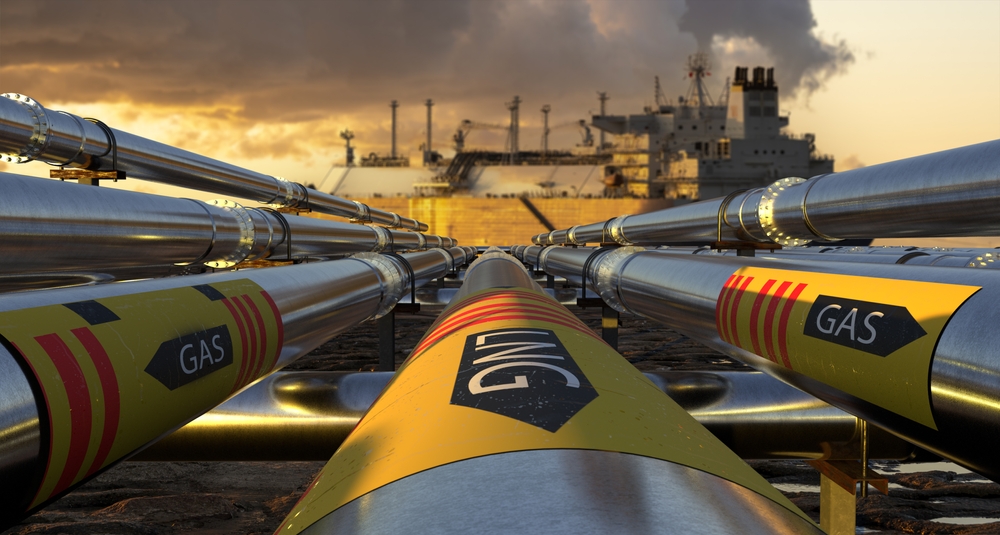
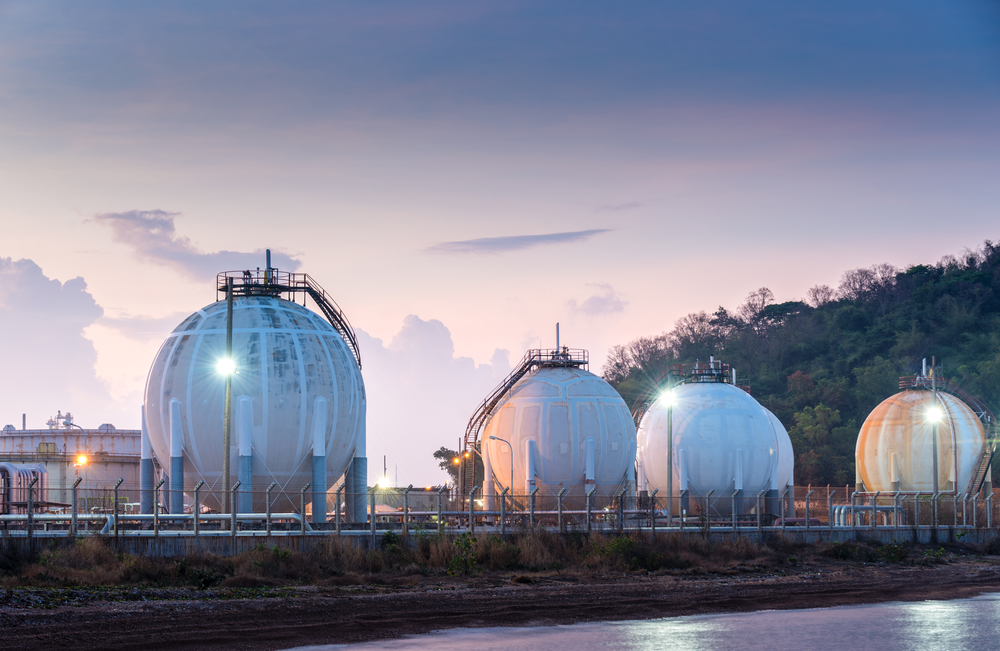
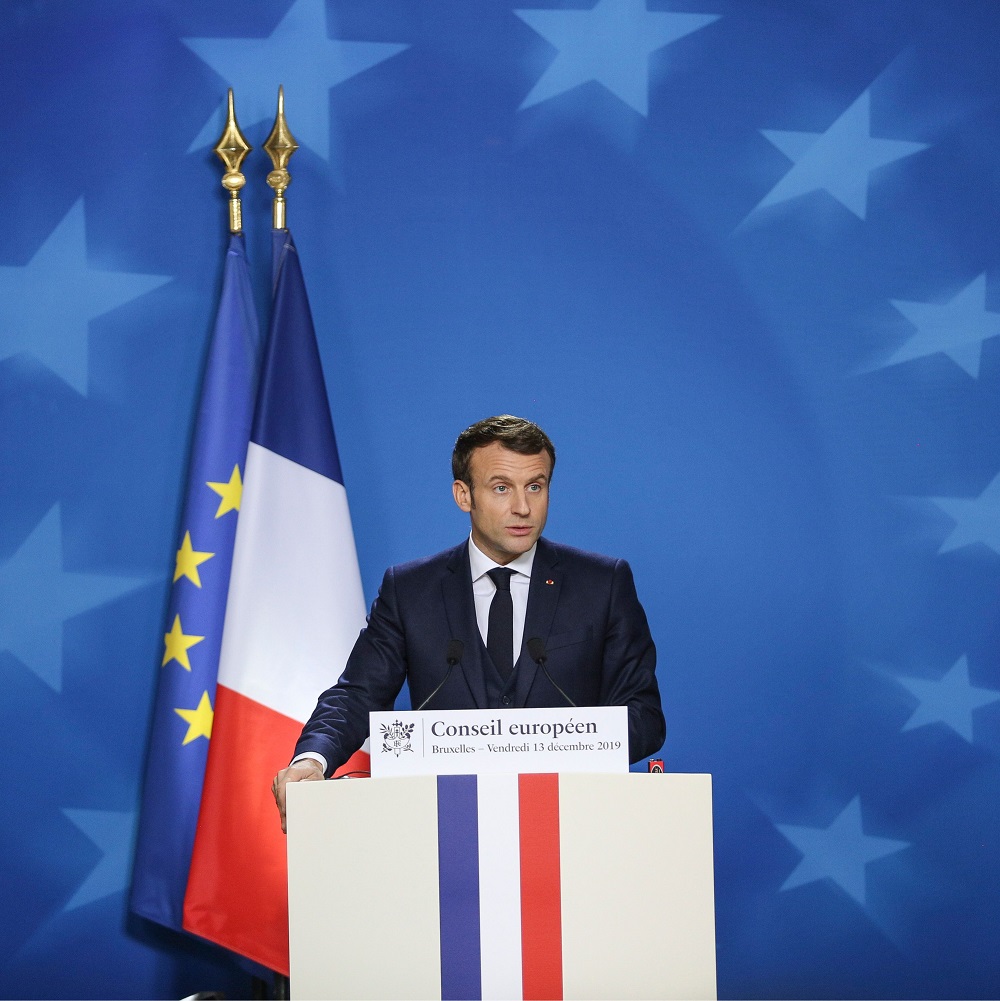

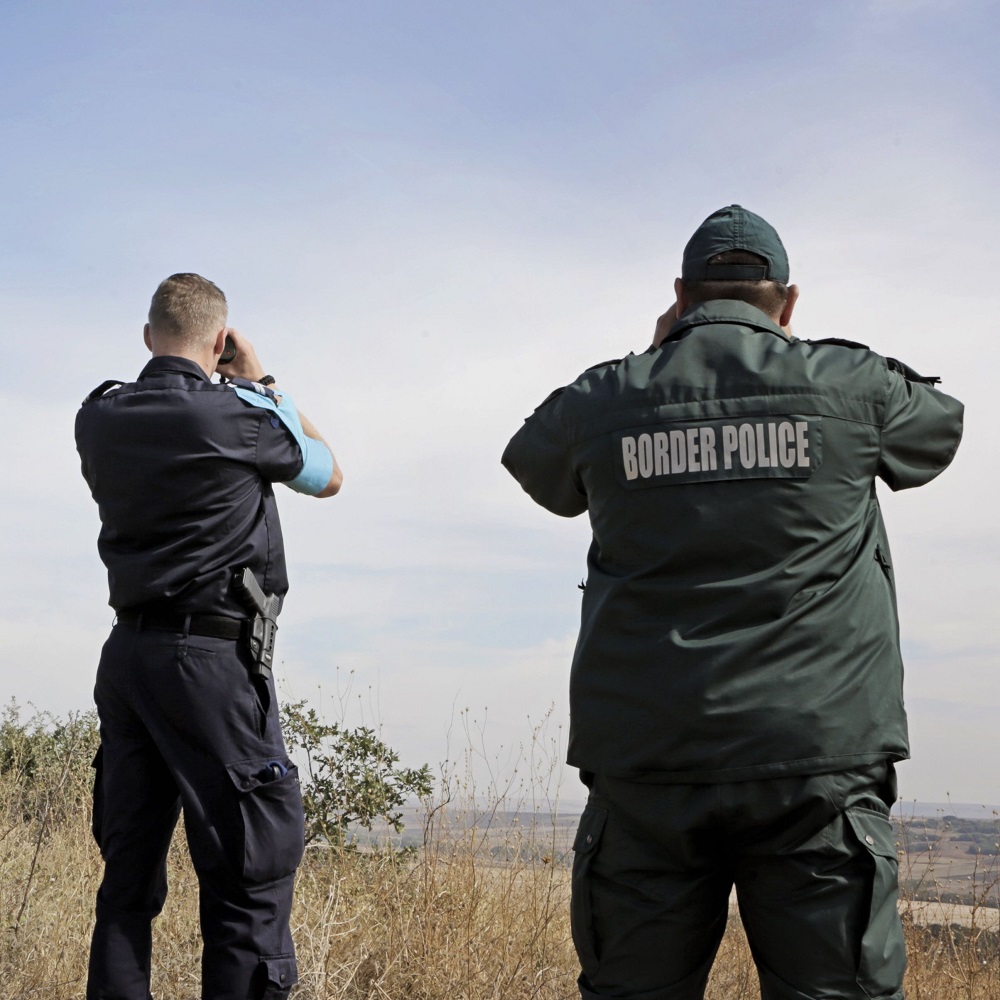
.jpg)
